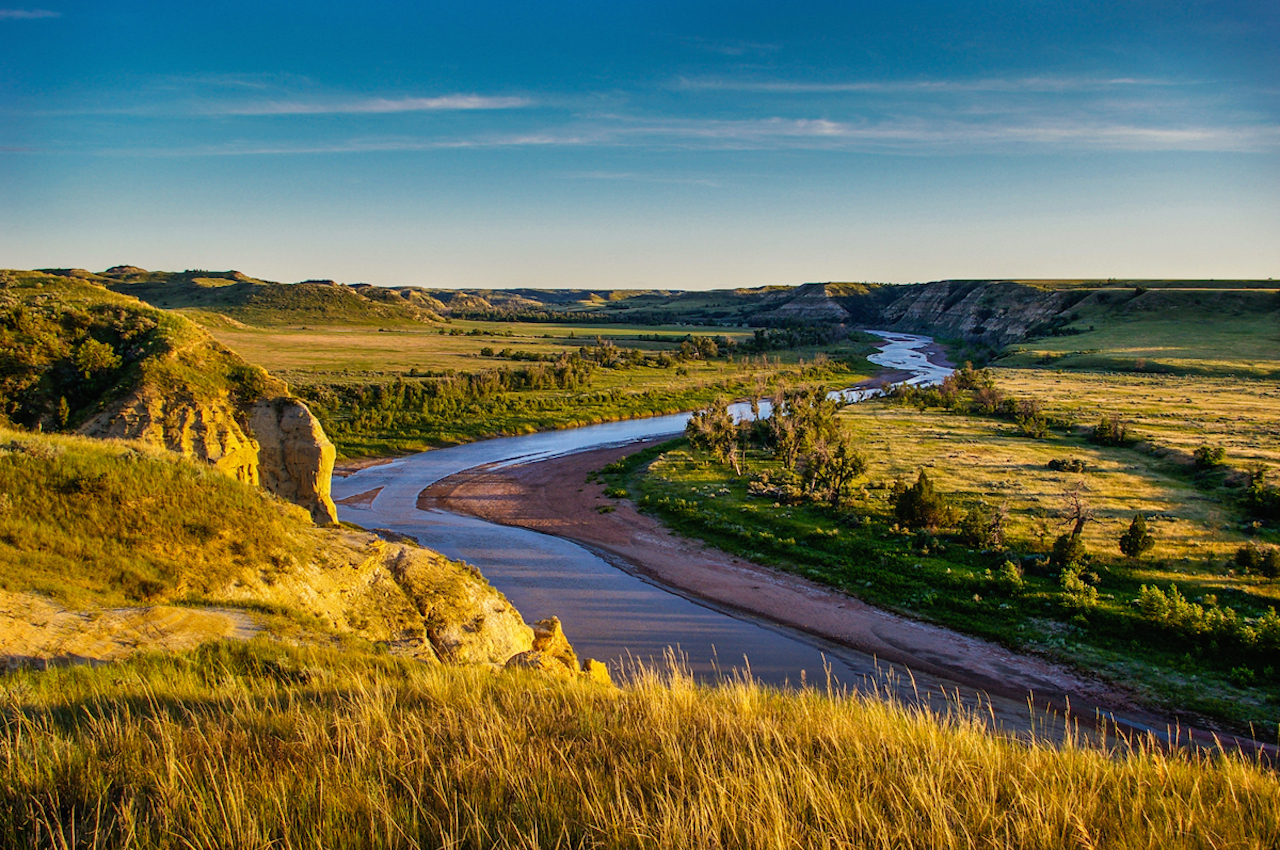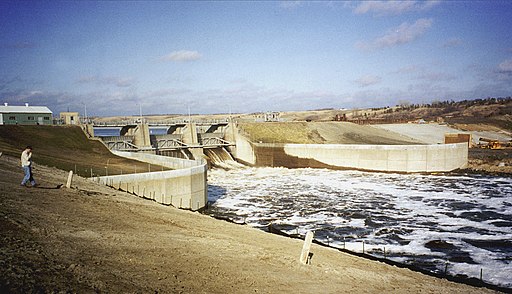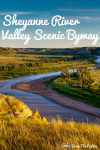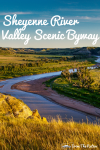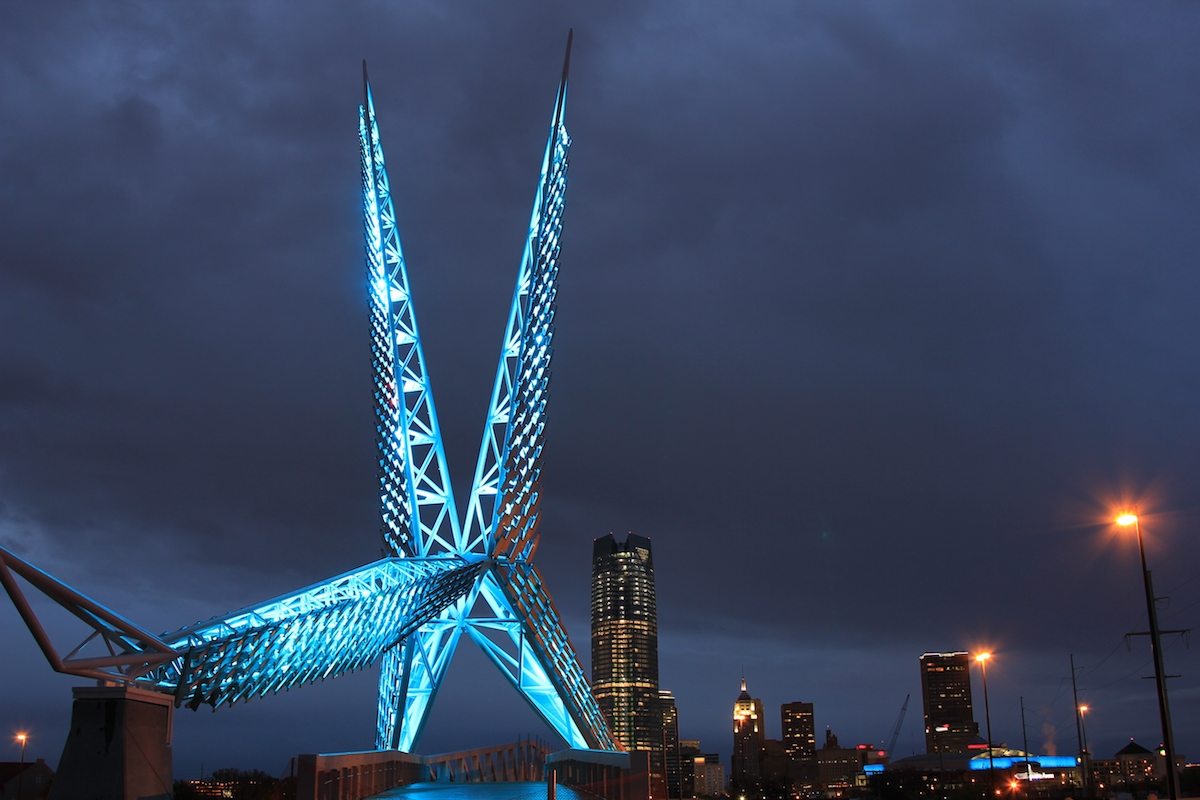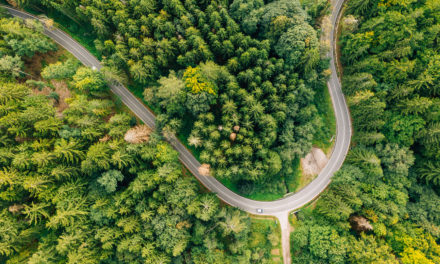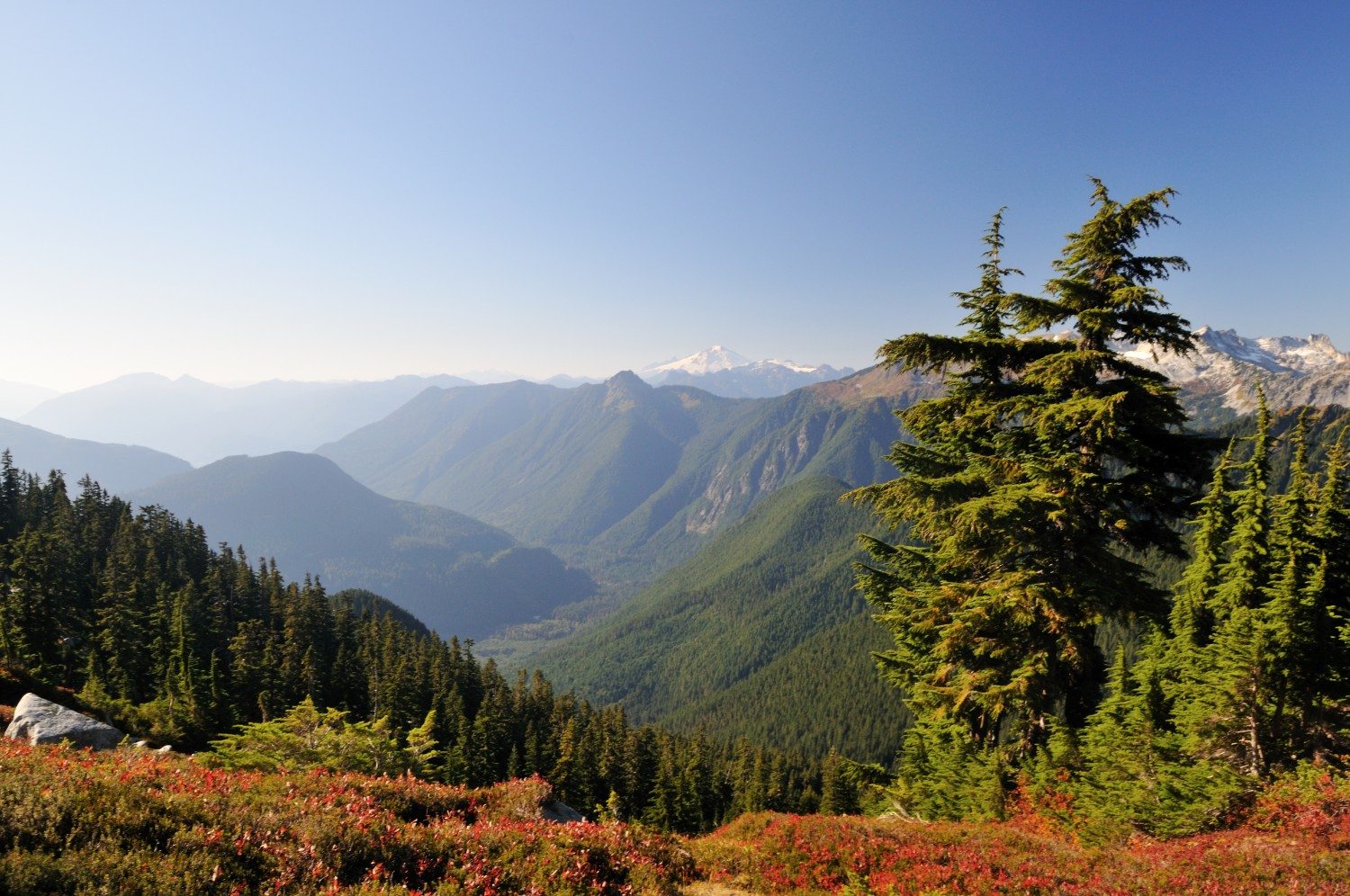The Sheyenne River Valley Scenic Byway follows the course of the Sheyenne River as it flows southward through the North Dakota prairie. Along the way the landmarks include Native American burial mounts and meeting sites, the pioneer dwellings of early Norwegian settlers, unique bridges, broad lakes, charming churches and fields of sunflowers in season. This is a quiet and intimate kind of a drive, as the road flirts with the river between Valley City and Lisbon. The total length is 63 miles and can be accomplished in one day.
Begin just off Interstate 94, at the Rosebud Visitor Center in Valley City. It has some great historic exhibits about the railroad and railroad history and is also the visitors enter for the Sheyenne River Valley Scenic Byway. It is a good place to gather information about what you will see en route. Be sure to see the North Dakota Agricultural Hall of Fame as well as “Rosebud”, an 1881 Northern Pacific Superintendent’s railroad car. Ask about The Valley City Historic Bridges Tour to see bridges in the area, the most famous of which is the 3860-foot long Hi-Line Bridge, completed in 1908. It soars 162 feet overhead, as it traverses the riverbed. You will be amazed by the sheer size and design of what was the longest and highest single-track rail bridge in the USA at the time of its construction.
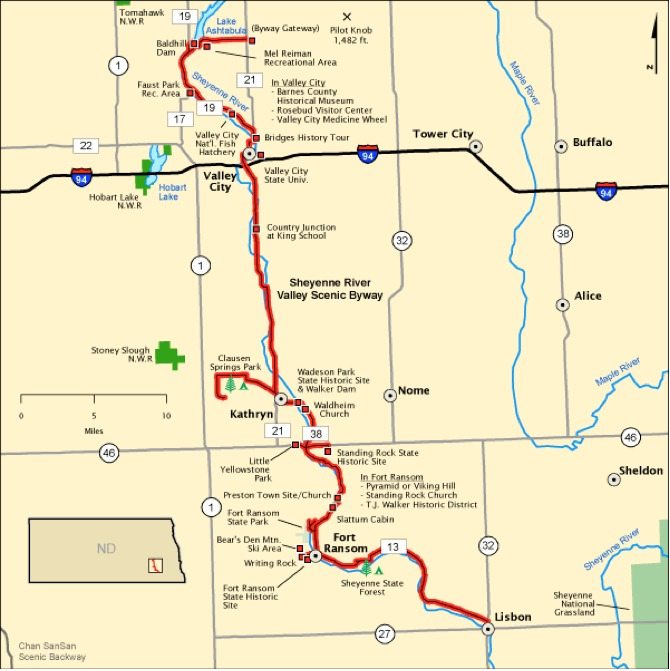
If you wish to visit the short, upper end of the Sheyenne River Valley Scenic Byway, take a drive north by northwest out of town via hwy 19, which follows the Sheyenne River up to the Baldhill Dam, completed in the 1950s. It formed the 27 mile long Lake Astahbula, which means “Fish River”. Baldhill Dam Park is a magnet for fishing, boating, and camping. Then, loop back to Valley City. Your destination is Medicine Wheel Park, where you are guaranteed to see things you have never seen before. The Park features two solar calendars: A horizon calendar (the medicine wheel) and a meridian or noontime calendar. Other aspects of this unique 30-acre park include Native American burial mounds, a solar system model, the North Country National Scenic Trail and other woodland nature trials, several scenic overlooks of the Sheyenne River valley and Valley City, and a 3000 square foot perennial flower garden. Be sure to walk across the Valley City State University Footbridge, an ornate suspension bridge across the Sheyenne River. Valley City is a nice place to go antiquing, with Bob’s Collectables , E & S Antiques, Unique Antiques, and Katydid Antiques among the shops to visit.
Leaving Valley City, head south on hwy 21 as it follows the course of the Sheyenne River. The Riparian Restoration Interpretive Site has a pull off with informational signs and a short trail down to the river. The Kings Schoolhouse is the last one-room schoolhouse in the valley, where you can see the room fitted out with blackboard and desks. There’s also a shop there offering hand-made country crafts. The road continues through the prairie farm country abutting the river, and crossing it at several points along the way. This is a peaceful, quiet stretch of road, under spacious skies. At Clausen Springs Recreation Area you can take a two mile hiking trail around the pretty lake.
Kathryn is technically a city. In reality it is a quaint town of a population of 60, offering a main street that looks like it was preserved in amber from 100 years ago, and some impressive grain elevators, or “skyscrapers of the plains”. The town began when the Northern Pacific Railroad came from Fargo and went as far as Marion. In 1901 a railroad man named the place Kathryn after his daughter. The Rusty Spur Café is here, if you stop for lunch have the specialty dessert, Lefse, a traditional soft, Norwegian flatbread made with potatoes, flour, butter, and milk or cream, cooked on a griddle. You’ll see why many consider Kathryn “The Lefsa Capital of North Dakota”. Find the little red jail house and cross the main street to read the sign about how grain elevators work. Old timers here will tell you that years ago, Ben Herr was the rural mail carrier.

Leaving Kathryn, you will cross the river and on your left come to the pullout for Walker Dam, dating to the 1930s. Then turn right and southward on 120th Avenue SW, also known as Valley Road, to the Waldheim Church a charming white clapboard church with a pretty steeple that dates back 1886, and hints of the Norwegian homeland of the people who live in this part of North Dakota. It is a delight to photograph, with the wooded hills as the backdrop. Continue south of Valley Road, where you have another photo op at Wadeson Park State Historic Site – the Jensen cabin, built in 1878 by Norwegian immigrant Carl Bjerke Jensen, made from hand-hewn oak. The cabin and the land were donated to the State Historical Society by the Wadeson family in 1957. At highway 46, go west to Little Yellowstone Park with its picnic shelters, an athletic field, a wading pool, and scenic views. Then go about two miles east on hwy 46, to Standing Rock State Historic Site, which the Sioux held sacred. There are four prehistoric burial mounds dating from the Woodland Period (A.D. 0-1400). One features the four-foot rock. The unpaved access road to the site south of 46 climbs a steep hill and access depends on weather and road conditions. There is a gravel parking lot at the top of the hill. A monument beside the mounds gives a brief description of the significance of this prehistoric cemetery.
Return to and continue south on Valley Road throughout this section of the Byway, since it follows the river. Preston Church is another gem waiting for your camera, a darling white church with classy red trim. You may want to photograph the rural post office and the former Preston community. The Slattum Cabin is the restored log home of Theodore Slattum, a Norwegian homesteader who was one of the largest landowners in Ransom County. If you go in the spring you are sure to enjoy the wildflowers as you read the interpretive panels about early pioneer life.
Fort Ransom was once a vast military post, created just after the end of the Civil War. The historic site has interpretive signs and you can see what’s left of the old moat and building locations. The park has a farm that hosts the annual Sodbuster Days celebration. The T.J. Walker District includes the T.J. Walker Flour Mill, one of the few remaining flour mills in North Dakota, the T.J. Walker Historical House and Barn, Pioneer Dam and the Bear Creek One-Room Schoolhouse. Sheyenne State Forest Overlook offers more than 500 acres of outdoor forest for recreation. Here you can find out about ranching in the rocky terrain and you can hike a section of the North Country Trail.
 Lisbon is the Southern Gateway of the Sheyenne River Valley Scenic Byway, and boasts National Register of Historic Places listings, retail shops, restaurants, lodging, golf, camping, swimming, and other recreational facilities. Downtown Lisbon is home to the Lisbon Opera House as well as the Scenic Movie Theater, with its jazzy Art Deco marquee, which was established in 1911. The Scenic is the oldest, continuously running theater in the United States. Ransom County Court House is also an impressive example of Art Deco architecture. The Bradford Hotel is on the National Register of Historic Places. Swing by Sandanger Park with a swimming pool, campground, skate park, and mini golf. For a meal in Lisbon, try the lattes and sandwiches at Ho-Den-Attes on Main, in an historic building, surrounded by pleasant music and an interesting gift shop; try the Hammin’ it Up on Rye or the Ransom Handsome sandwich. As you enjoy your meal, think back on your favorite features of your drive, amid the serene beauty and quiet drama of Sheyenne River Valley Scenic Byway.
Lisbon is the Southern Gateway of the Sheyenne River Valley Scenic Byway, and boasts National Register of Historic Places listings, retail shops, restaurants, lodging, golf, camping, swimming, and other recreational facilities. Downtown Lisbon is home to the Lisbon Opera House as well as the Scenic Movie Theater, with its jazzy Art Deco marquee, which was established in 1911. The Scenic is the oldest, continuously running theater in the United States. Ransom County Court House is also an impressive example of Art Deco architecture. The Bradford Hotel is on the National Register of Historic Places. Swing by Sandanger Park with a swimming pool, campground, skate park, and mini golf. For a meal in Lisbon, try the lattes and sandwiches at Ho-Den-Attes on Main, in an historic building, surrounded by pleasant music and an interesting gift shop; try the Hammin’ it Up on Rye or the Ransom Handsome sandwich. As you enjoy your meal, think back on your favorite features of your drive, amid the serene beauty and quiet drama of Sheyenne River Valley Scenic Byway.

